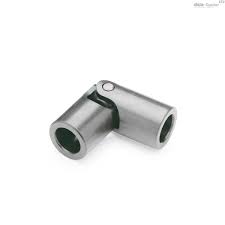In the realm of mechanical systems and automotive engineering, the universal joint stands out as one of the most essential components. Often referred to as a U-joint, it plays a pivotal role in transferring rotary motion between two shafts that are not in a straight line. With its flexibility and strength, the universal joint ensures smooth power transmission even when angles or alignment changes occur during operation.
What is a Universal Joint?
A universal joint is a mechanical connector made up of two yokes and a cross-shaped central component known as a spider. It allows rotational power to pass through shafts that are offset or angled. By accommodating angular movement, it ensures that connected parts remain synchronized during operation.
This coupling solution is not limited to vehicles. It’s used extensively in various machinery, industrial equipment, marine applications, and aerospace systems where flexible power transmission is needed.
The Role of Universal Joints in Automotive Systems
In automobiles, the universal joint is critical for transmitting torque from the transmission to the differential, especially in rear-wheel and four-wheel-drive systems. It compensates for the up-and-down movement of the suspension, allowing the drive shaft to maintain consistent power delivery.
Without a properly functioning universal joint, the drive shaft would not be able to rotate smoothly, leading to vibrations, noise, or even catastrophic failure if the joint breaks under stress.
Key Features of a Universal Joint
The primary features that make a universal joint effective include:
- Angular Flexibility: It allows the transmission of power through varying angles.
- Durability: High-quality materials like alloy steel or chrome-moly provide the strength needed to handle high torque and speed.
- Compact Design: Despite handling significant loads, the component is relatively small and easy to integrate into tight spaces.
- Low Maintenance (in sealed versions): Modern sealed universal joints are designed to operate for extended periods without lubrication or servicing.
Types of Universal Joints
There are several types of universal joints, each suited for different applications:
1. Single Universal Joint
This is the most basic design, typically used when the misalignment angle is small. It includes one spider and two yokes.
2. Double Universal Joint (Cardan Shaft)
When a greater angular displacement is needed, a double joint provides smoother rotation and eliminates velocity fluctuations that occur with single joints.
3. Constant Velocity Joint (CV Joint)
Though technically a more advanced type, CV joints offer consistent rotational speed even at varying angles and are commonly used in front-wheel-drive vehicles.
4. Needle Bearing Joint
These joints reduce friction and increase efficiency by incorporating needle bearings inside the caps, making them suitable for high-speed applications.
Applications Beyond Automotive
While cars and trucks are perhaps the most common association with the universal joint, its use extends to:
- Industrial Machinery: Connecting drive systems, conveyors, or rotating equipment.
- Agricultural Equipment: Tractors and harvesters utilize U-joints in their PTO (Power Take-Off) systems.
- Aerospace: Control systems in aircraft may employ specialized universal joints to transfer motion.
- Marine Engineering: Used in propulsion systems and steering gear of boats.
Signs of Universal Joint Failure
Recognizing the symptoms of a failing universal joint can prevent serious damage:
- Clunking noise when shifting gears or changing directions
- Vibration while driving, particularly at higher speeds
- Visible rust or wear around the joint
- Grease leakage from a sealed joint, indicating loss of lubrication
Ignoring these signs could lead to a complete failure of the drive shaft, potentially resulting in a loss of control or costly repairs.
Maintenance and Replacement
Depending on the design, some universal joints are serviceable and require periodic greasing, while sealed units are maintenance-free. However, even sealed joints can eventually wear out due to repeated stress and environmental factors.
When replacing a universal joint, it’s essential to choose the right size and type for your application. High-quality aftermarket and OEM options are available, and installation should be done carefully to ensure proper alignment and balance.
Choosing the Right Universal Joint
When selecting a universal joint, consider the following:
- Torque capacity: Ensure it can handle the power output of your system.
- Operating speed: Some joints are better suited for low-speed torque, while others are built for high-speed performance.
- Environment: Choose corrosion-resistant materials if the joint will be exposed to moisture, chemicals, or abrasive conditions.
- Angle of operation: For higher angles, a double universal joint or CV joint may be necessary.
Conclusion
The universal joint may be a humble mechanical component, but its impact on performance and safety in power transmission systems is profound. Whether in vehicles, industrial equipment, or specialized machines, it ensures that motion remains smooth, efficient, and aligned — even under challenging conditions. By selecting the right type and maintaining it properly, users can enjoy long-lasting, trouble-free operation in their mechanical systems.

